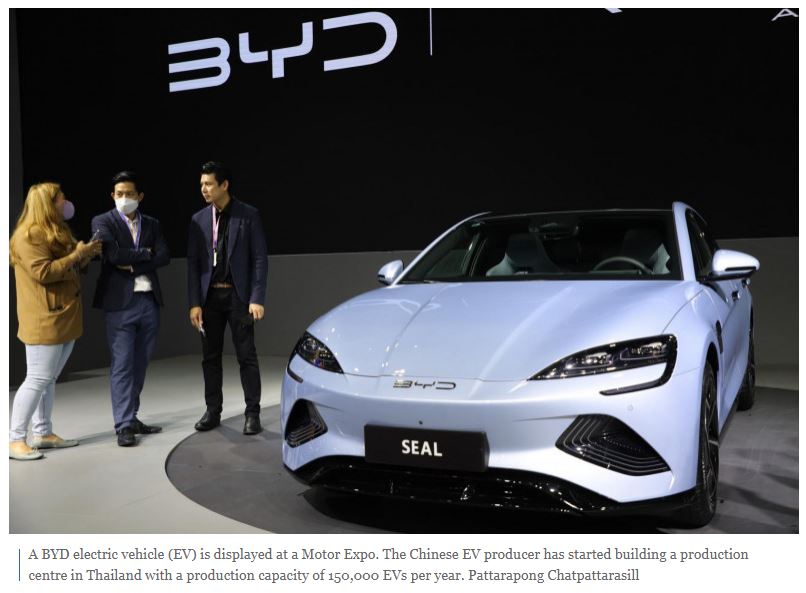FDI to fuel a China-Asean shared future
In 2013, President Xi Jinping announced an initiative for China to work with Asean countries for a 21st century Maritime Silk Road to build a closer China-Asean community with a shared future.
For a decade, China and Southeast Asia have enjoyed growing connectivity, deepening economic integration and robust business ties.
Since 2020, Asean has surpassed the European Union to become China’s largest trading partner, marking the official formation of a new regional economic and trade cooperation pattern.
In 2022, the Regional Comprehensive Economic Partnership (RCEP) came into effect, which led to a year-on-year increase of 15% in China-Asean trade.
As the partnership continues to deepen beyond trade, we expect to see China’s growing footprint in Asean through foreign direct investment (FDI), planting seeds for growth in a shared future.
China and Asean, as two of the world’s fastest growing regions, have highly complementary industrial structures.
Southeast Asia enjoys strong manufacturing and production capacity, a rising and young domestic consumer population, as well as increasing urbanisation. The region’s growing trade and capital flows, continuing digital transformation and greater focus on sustainability are creating tremendous opportunities.
NEW PRODUCTION BASES
China’s modern economy was built on the strength of a solid and often low-tech manufacturing sector, making it the world’s single largest manufacturer. As China continues to develop and move up the value chain — towards producing more high-tech manufactured goods and services and investing in more R&D — it is likely that some of the country’s lower-tech, labour-intensive manufacturing will be up for grabs.
The garment and textile industry is the most obvious candidate for moving production out of China to other Asian countries. There are also examples of intermediate-input and other tech manufacturing leaving China, with countries such as Thailand, Vietnam and Indonesia picking up electronics work.
As more companies seek geographic diversification and adopt a “China+1” strategy, Southeast Asia will continue to gain market share, as well as a greater slice of global FDI as the centre of gravity of global manufacturing continues to shift.
FDI flows into Asean as a percentage of total world flows rose to a record high of 11% in 2021, almost on par with China (12%). China became the joint largest source country for FDI into Asean (not counting intra-Asean) in 2021, on par with Japan. While the process was partially disrupted by the pandemic, after the reopening, China’s investment push into Asean will continue to thrive.
Most of China’s FDI projects in Asean last year were in sectors where recipient countries have a competitive advantage. Over the years, China has been investing heavily in Asean’s booming manufacturing sector, ranging from the electric vehicle (EV) supply chain in Indonesia and Thailand, to consumer electronics in Vietnam, as well as Singapore’s promising pharmaceuticals.
For example, BYD, China’s top EV producer, has started building a production centre in Thailand with a production capacity of 150,000 EVs per year. Thailand is its first production hub in Asean, thanks in part to the country’s generous subsidies that amount to as much as 150,000 baht per EV.
Thailand is not the only candidate for Chinese FDI along the EV supply chain. Chinese investment has been key in facilitating Indonesia’s nickel smelter boom, a key input for producing EV batteries. China-based CATL, the world’s biggest EV battery maker, signed an agreement with Indonesia’s SOE Antam and IBI to jointly develop an almost US$6-billion mining-to-batteries ecosystem.
Elsewhere, Risen Energy, a Chinese solar power firm, announced its first facility investment in Southeast Asia, worth at least copy0 billion over 15 years, to manufacture high-efficiency photovoltaic modules in Malaysia.
Chinese firms also invested in Singapore. In late 2022, WuXi Biologics and WuXi AppTec announced a S$4-billion investment in the country’s pharmaceutical manufacturing sector.
EFFICIENCY IMPROVEMENTS
The spreading supply chain across Asia is already resulting in increased capability and production quality in the countries closest to China.
Continued investment, the right partnerships and new trade agreements such as RCEP will likely bring to Southeast Asia a degree of the economic advancement China has already been enjoying.
Yet to attract more global production and remain competitive with China, Southeast Asian economies need to make deeper efficiency improvements.
Despite the shadows cast by the global pandemic in the last few years and other market uncertainties, we see the coming years as a period of great promise for Southeast Asia, brimming with potential ranging from sustainability and digital technology to trade and wealth.
This creates unprecedented opportunities for Chinese companies seeking continuous growth and a global presence in the post-Covid era.
The key to unlocking opportunities is not just to understand the dynamics of each market, but to understand how to help businesses across markets connect and work together — from the automotive sector in Thailand and electronics manufacturing in Malaysia, to natural resources in Indonesia and pharmaceutical and financial services in Singapore.
Giorgio Gamba is the CEO of HSBC Thailand and Mark Wang is the president and CEO of HSBC China.
Source: https://www.bangkokpost.com/business/2590774/fdi-to-fuel-a-china-asean-shared-future


 Thailand
Thailand




